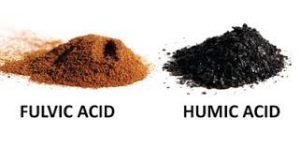HUMUS MEANING- COMPOSITION & BENEFITS
Introduction
Humus is the brown or dark brown amorphous organic matter that forms in soil when dead plant and animal matter decays. Various soil organisms such as earthworm synthesize the original tissues to form humus. Humus contains many nutrients that improve the health of soil, in which Nitrogen is most important.
Composition of Humus
In humus C: N (Carbon to Nitrogen) ratio is 10:1. The composition of humus contains 50% C, 35% O, 5% N and 5% H. Humus is very complex substance and is integral part of soil organic matter. Soil organic matter consists of humic and non-humic substances. Non-humic substances e.g. carbohydrates, proteins, fats, waxes, pigments etc. have low molecular weight and have definite characteristics than humic substances. Since these are easily attacked by soil microorganisms, hence turn rapidly into the soil. Further humic substances are divided into three classed based on molecular weight and solubility.
- Fulvic acid– It is most susceptible to microbial attack and has lowest molecular weight. It is soluble in acid & alkali both.
- Humic acid– It is alkali soluble but acid insoluble and has medium molecular weight.
- Humin– It has high molecular weight and generally insoluble in acid and alkali both.

Humification– It is a process of formation of organic matter that has reached maturity i.e. humic substances decomposed from plant remains. Humification is the result of progressive oxidation by addition of oxygen from oxygenated water and lowering of the groundwater table, pH values of the water in the peat, and heat exposure in the pit. In the presence of oxygen, microbes and fungi attack lignin or organic substance that binds the cells, fibers, and vessels of wood and converted to humic substances. Humification can occur naturally in soil or artificially in the production of compost. Organic matter is humified by various fungi, bacteria, microbes and animals such as earthworms, nematodes, protozoa etc. In humus 40-45% is lignin, 30-33% is protein and rest is fats, waxes and residual materials. Since lignin and protein together constitute about 70-80%, hence humus is also called lingo-protein complex.
Benefits of Humus
- The process of humification feeds the microorganisms in the soil and thus maintains the health of soil.
- Humus contains many nutrients that improve the health of soil, especially Nitrogen which is most important for plant growth. Besides, humus is an additional source of nutrients for microbes.
- Humus is a colloidal substance and increases the cation exchange capacity of soil, thus able to store the nutrients. These nutrient cations are available to plants held in the soil and thus prevents from leaching by rain or irrigation.
- Humus has the ability to hold about 80–90% of its weight in moisture, and therefore increases the soil’s capacity to withstand drought.
- Provide better water holding capacity and aeration.
- Imparts low plasticity and cohesion, thus favorable effect on aggregate formation and stability.
- Its color provide warm to cold soil during spring.
Read more…
SOIL HEALTH CARD-AIM & BENEFITS
KISAN CREDIT CARD- OBJECTIVES & REVISED FEATURES
KRISHI VIGYAN KENDRA
WHAT IS WEATHERING- TYPES & PROCESS
FORMATION OF SOIL-PROCESS & FACTOR OF SOIL FORMATION
SOIL STRUCTURE-DEFINITION,TYPES & IMPACT
SOIL PROFILE- DIFFERENT HORIZONS
SOIL TEXTURE- CLASSIFICATION & INFLUENCE
WHAT IS SOIL EROSION- TYPES & MECHANISM
SOIL TYPES IN INDIA: FEATURES